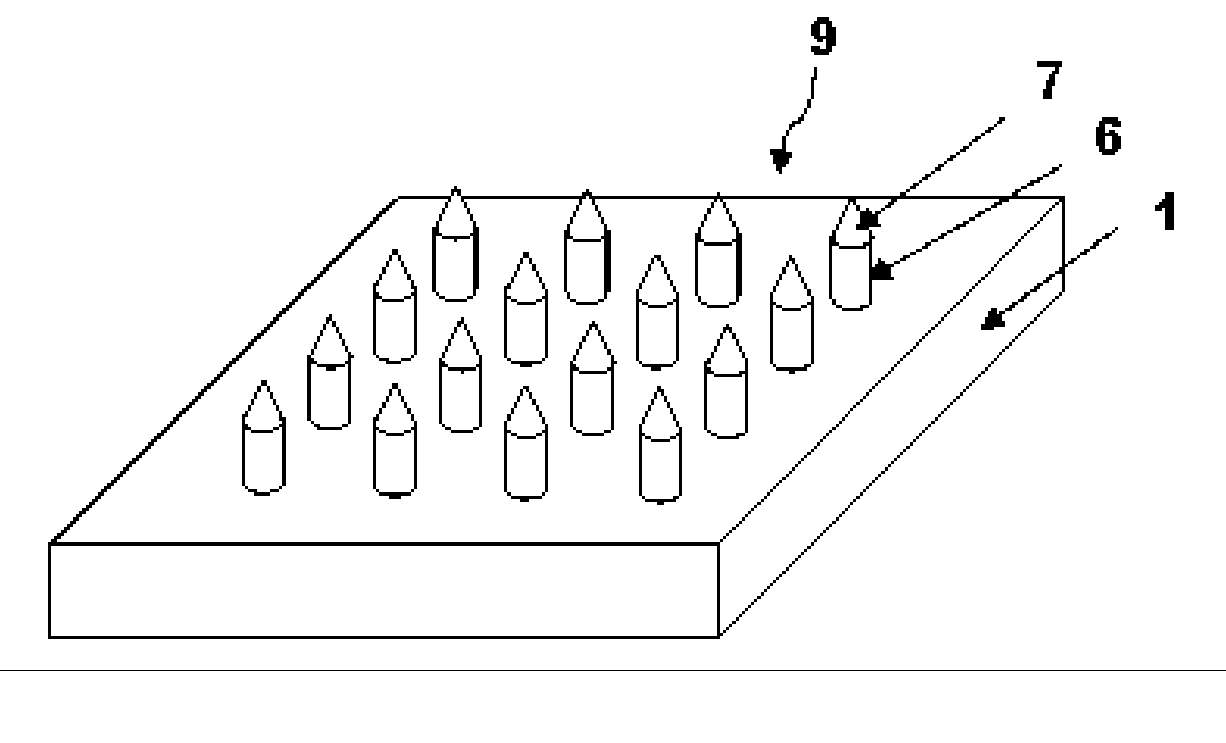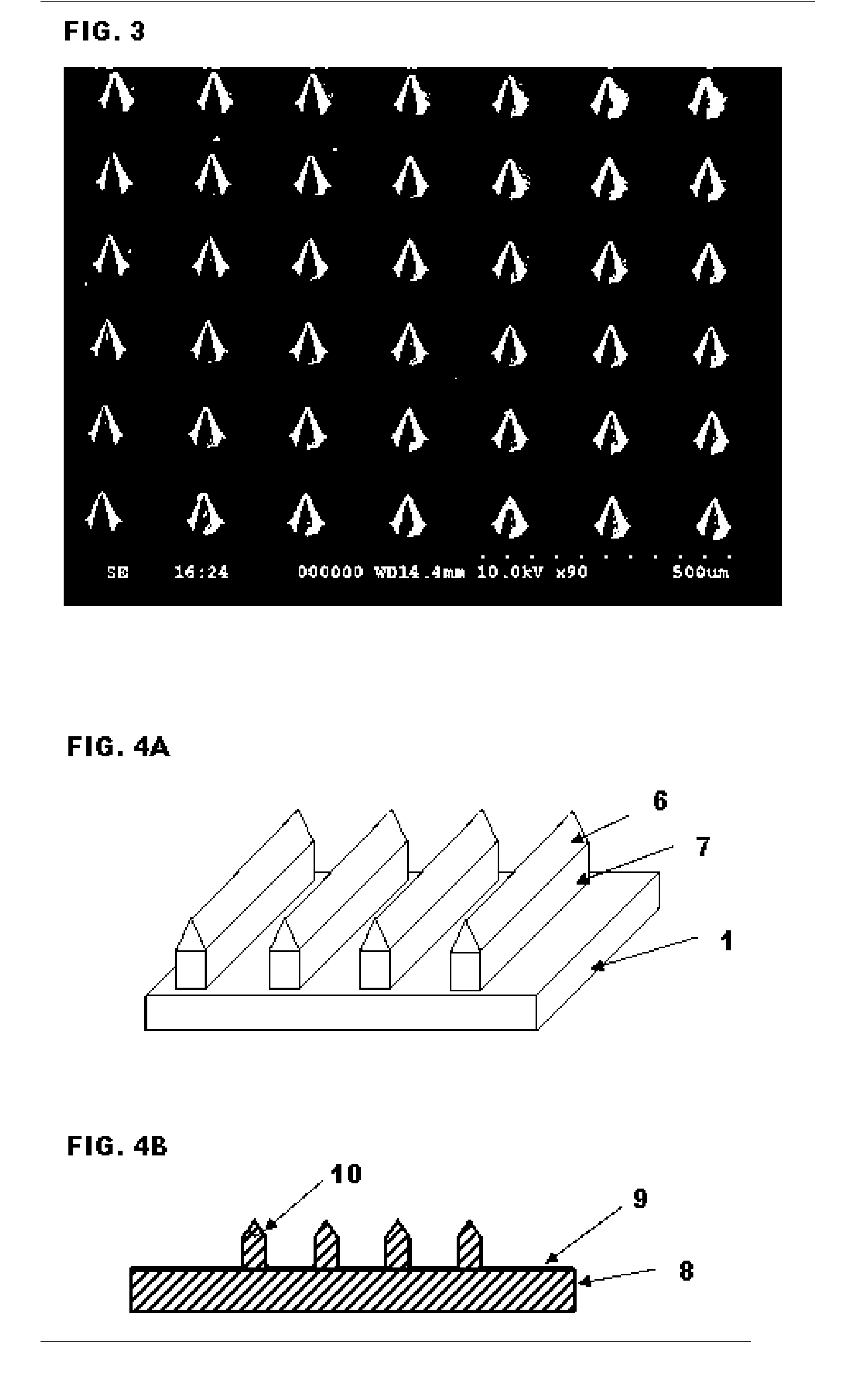High-Aspect-Ratio Microdevices and Methods for Transdermal Delivery and Sampling of Active Substances
a micro-device and high-aspect ratio technology, applied in the field of high-aspectratio micro-devices, to achieve the effects of improving selectivity, minimally invasive, and increasing needle length
- Summary
- Abstract
- Description
- Claims
- Application Information
AI Technical Summary
Benefits of technology
Problems solved by technology
Method used
Image
Examples
example 1
[0065] Fabrication of Si Microneedles
[0066] Bosch etch process is a widely used MEMS process that is known in the art to etch deep vias and trenches. The current invention disclosed a method that involved isotropic etch first to form microneedle tip 6 and second anisotropic Bosch etch later to form microneedle shaft 7 as shown in FIG. 6G.
[0067] Referring to FIG. 6A, a silicon wafer 1 of any crystal orientation with about 1 micron of thermal oxide 2 coated on both sides was used as substrate. Doping level in the silicon substrate was found to be not critical. A chromium layer with thickness ranging between 0.2 to 20 nm was sputtered onto the substrate. A layer of photoreist 3 was applied to front side of the wafer as shown in FIG. 6B. It was patterned into a number of circular islands with a diameter that was equal to the base of the microneedles as shown in FIG. 6C. The shape of the pattern was changed to rectangular to form microknives and microblades. The Cr etch was done using ...
example 2
[0068] Fabrication of Si Microneedles
[0069] The current invention also disclosed a method that did anisotropic etch first to form microneedle body and switch to orientation dependent etch (ODE) later to form microneedle shaft and tip.
[0070] A silicon wafer of orientation with 0.5-3 micron of thermal oxide coated on both side was used as substrate as shown in FIG. 6A. The oxide was patterned into a number of circular or square islands with a diameter that was roughly equal to the base of the microneedles. In one example, the diameter of the circular pattern was about 100 micron. The oxide etch was done by either buffered oxide etch in solution or dry etch using CHF3 or CF4 as etching gases. Once silicon oxide etch was completed, Bosch process was used to perform alternative deposition and etch cycles until the etch depth reaches the pre-defined length of microneedles, yielding a number of circular or square posts on the silicon substrate. The final shape of microneedles, as shown ...
example 3
[0071] Fabrication of Microblades and Microknives
[0072] As shown in FIG. 6C, if the pattern is a rectangular shape, the microdevices formed according to the process flow disclosed in the Examples 1 and 2 become microknives and microblades.
PUM
 Login to View More
Login to View More Abstract
Description
Claims
Application Information
 Login to View More
Login to View More - R&D
- Intellectual Property
- Life Sciences
- Materials
- Tech Scout
- Unparalleled Data Quality
- Higher Quality Content
- 60% Fewer Hallucinations
Browse by: Latest US Patents, China's latest patents, Technical Efficacy Thesaurus, Application Domain, Technology Topic, Popular Technical Reports.
© 2025 PatSnap. All rights reserved.Legal|Privacy policy|Modern Slavery Act Transparency Statement|Sitemap|About US| Contact US: help@patsnap.com



